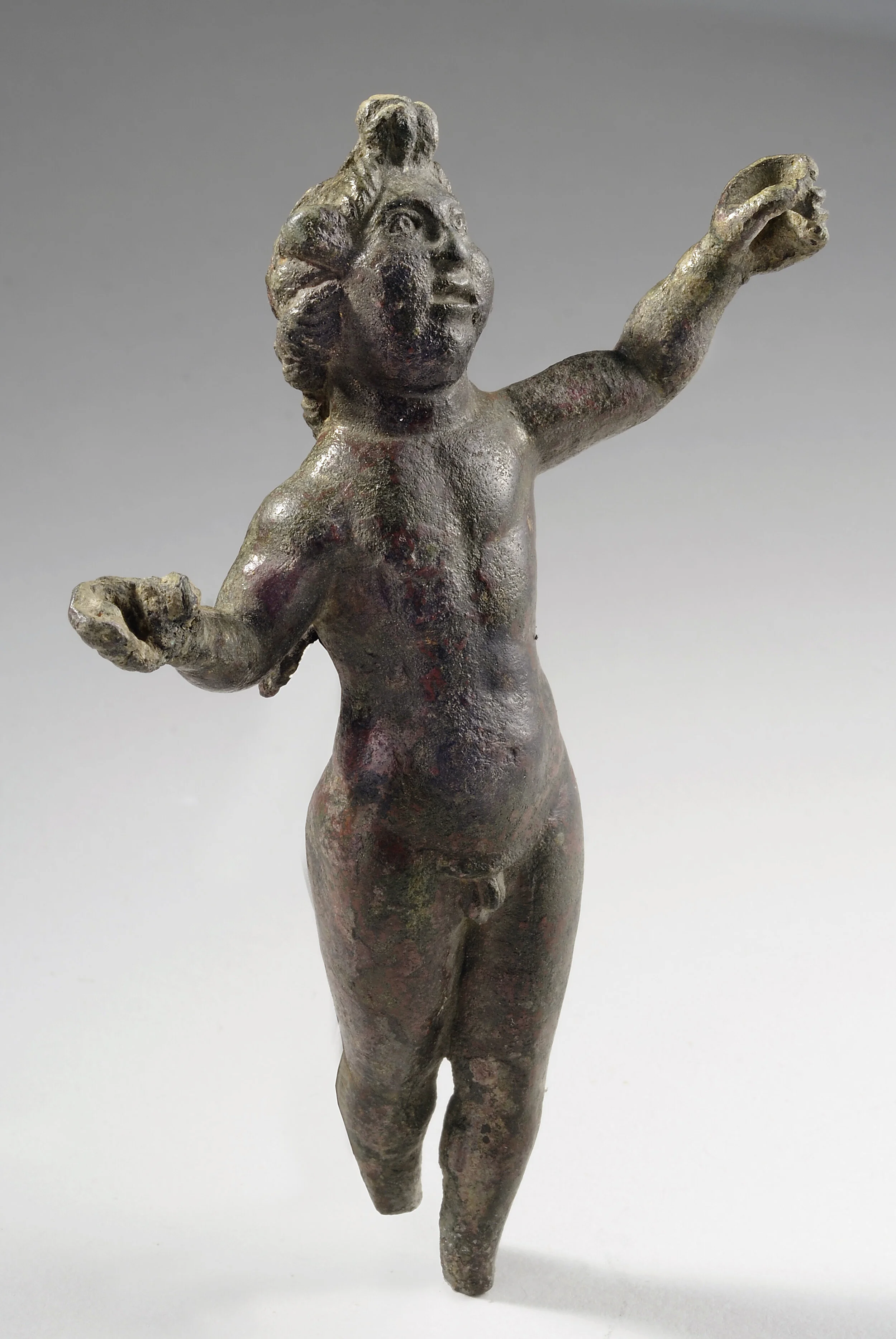Ancient Roman Bronze Eros Holding a Butterfly

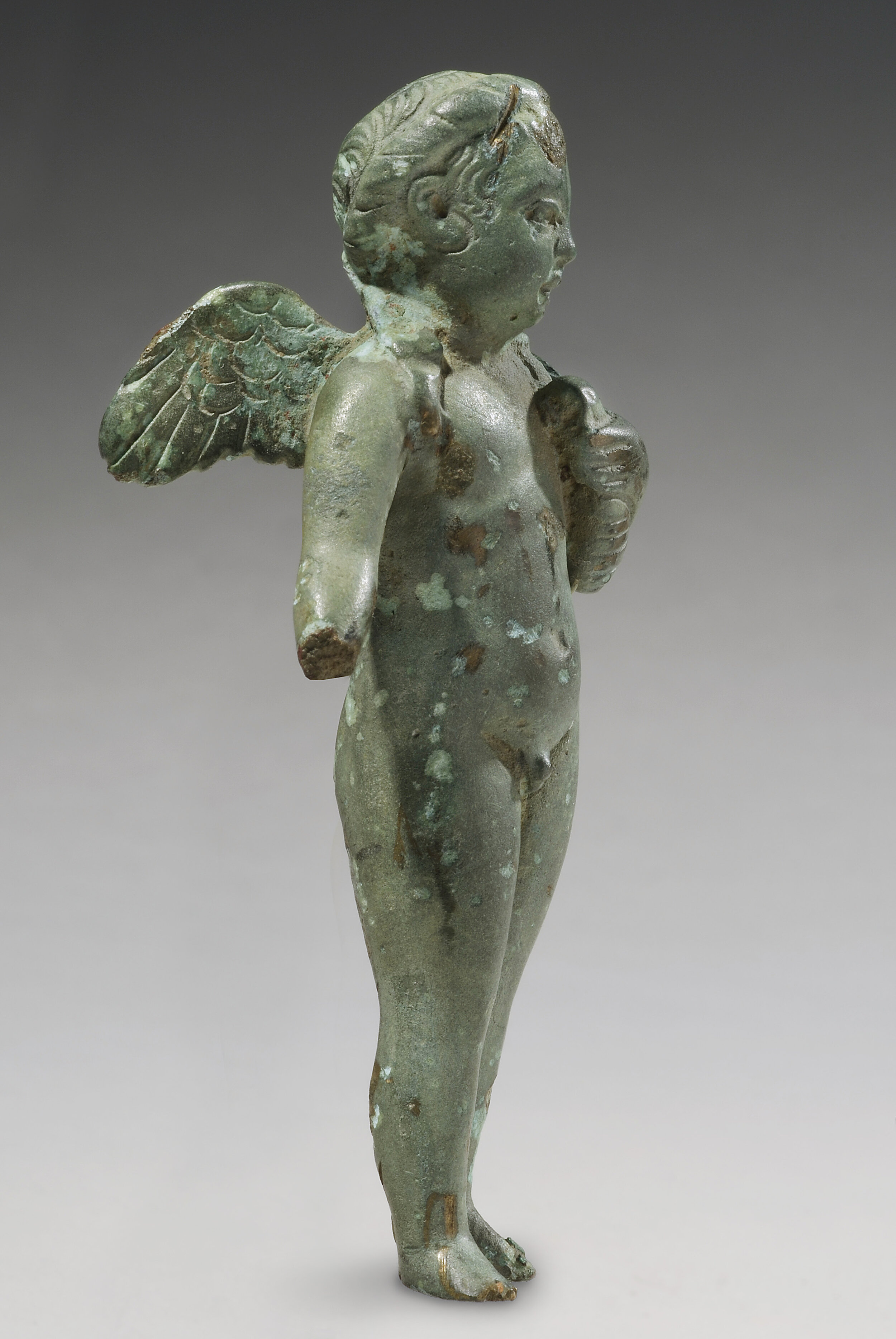
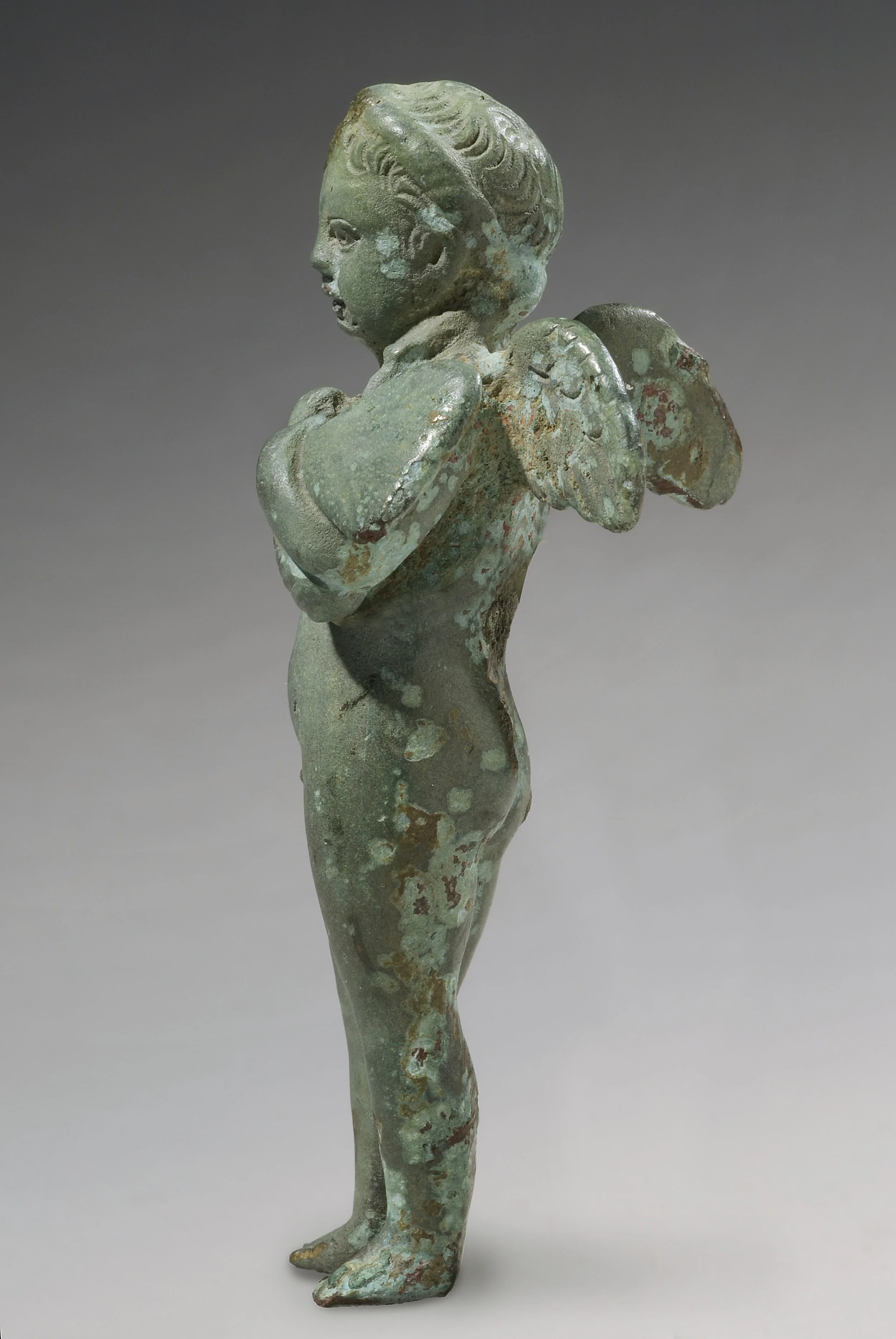
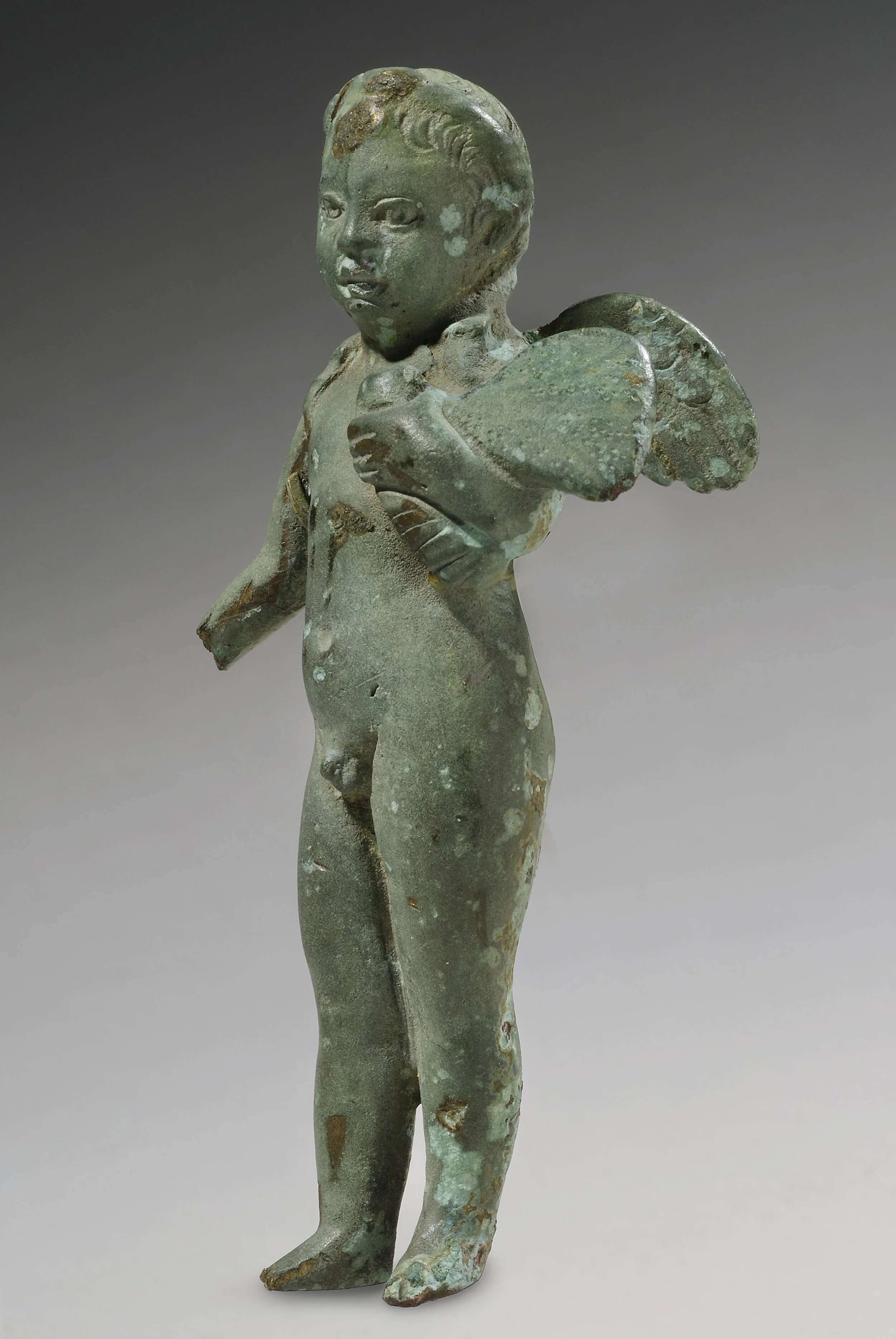
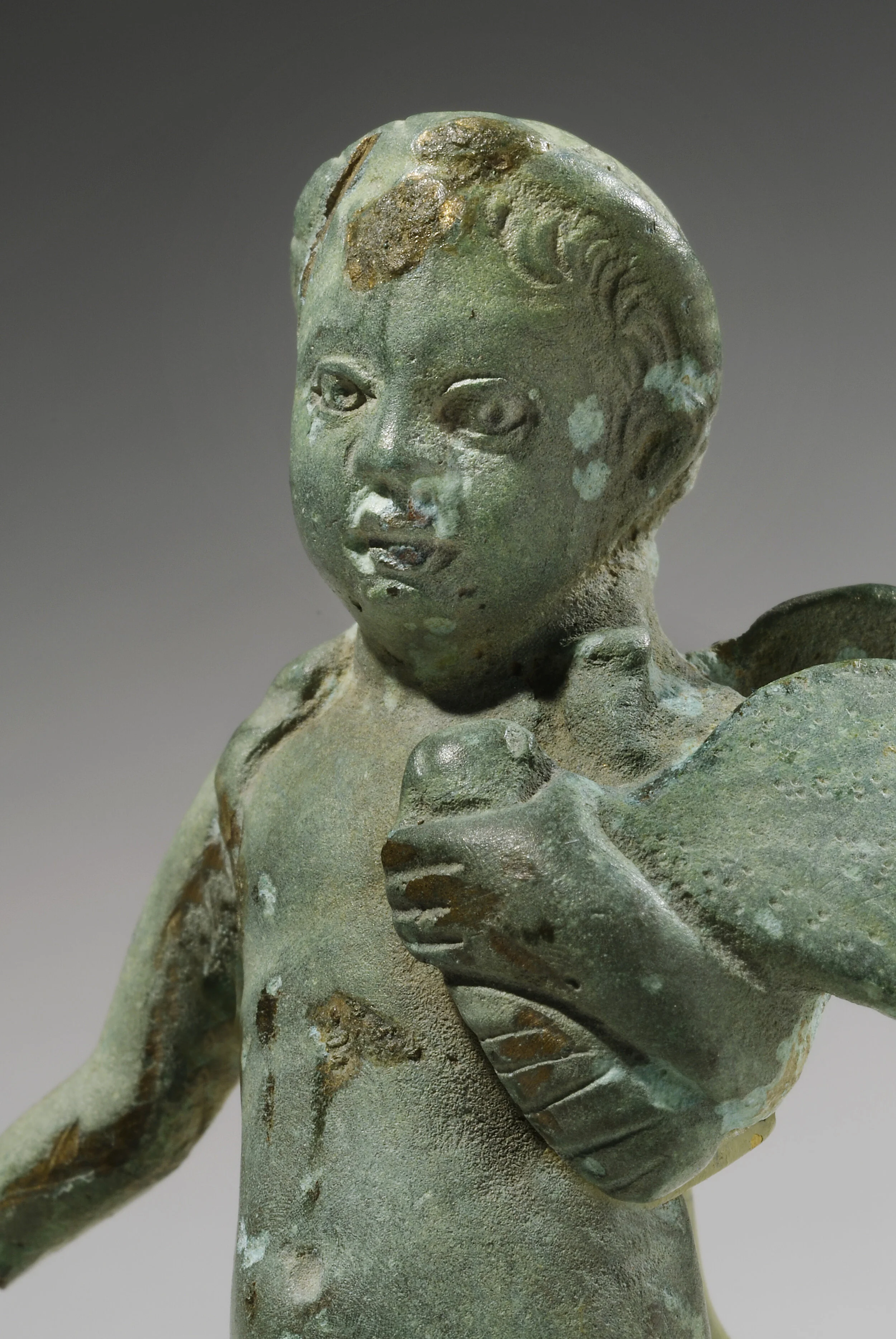

Ancient Roman Bronze Eros Holding a Butterfly
Roman, 1st-2nd century A.D.
Bronze
H: 8.7 cm
Serial: 1229
While it is not unusual for Eros to be found occasionally in the company of a butterfly on gems or pottery, the representation of these companions in the form of a bronze statuette is rare. Eros has wings outspread and is naked except for a rolled fillet around his head. His face is expressive and he stands in a relaxed pose, very much like that of a small child. His right arm is extended outward while he holds the body of a butterfly in his left hand, its wings supported by his bent left arm. Details of his short hair and wing feathers, as well as the wings of the butterfly, are indicated by marks made by the coldworking of the bronze with a punch or gravure after casting.
Objects dating to the later Roman period, particularly sarcophagi, depict Prometheus creating man with the assistance of Athena who holds a butterfly that represents a man’s soul. Because the same Greek word, psyche, means both “soul” and “butterfly,” writers in late antiquity, such as St. Basil, exploit this ambiguity as an allegory of renewed life, following the Christian concept of resurrection. The butterfly is also associated with procreation itself, as on a sixth century B.C. Greek black-figure vase (Pergamon Museum, Berlin1684) that depicts a butterfly fluttering beneath drops of semen that drip from a man’s erect penis. The juxtaposition of semen and butterfly point to the evidence of modern European names for this insect, which connect it to liquid that possesses nutritive power, hence the English butter-fly or the German Molkendieb, or “whey-thief.” Visual representations of the famous story of Cupid (the Roman version of Eros) and Psyche, written by Apuleius in the second century A.D., often give her butterfly wings or allude to the heroine with an image of a butterfly. Thus in this fascinating little bronze, Eros may not be securing just an ordinary butterfly in the protective fold of his arm, but his beloved Psyche. This concept may be borne out by the notable second century A.D. marble sculptures of Cupid and Psyche in Rome (Musei Capitolini) and Florence (Galleria degli Uffizzi) that show the pair in love’s embrace.
PROVENANCE
Private collection, acquired in the late 1970s – early 1980s






